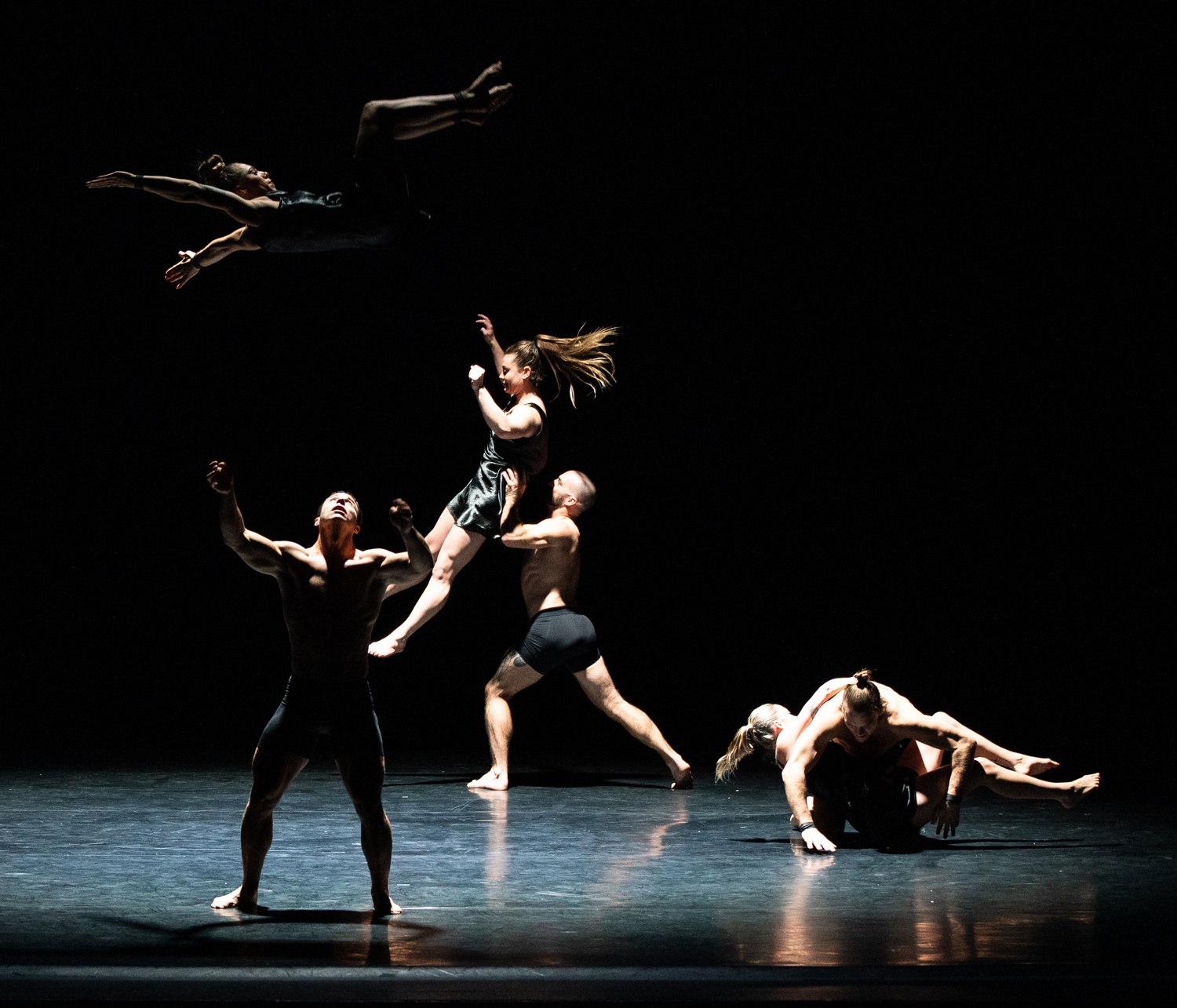
News
‘Appalling’: Keynote Speaker at Legacy of Slavery Symposium Calls for Faster Repatriation of Indigenous Remains
News
The State Legislature Is Considering an Endowment Tax. Experts Say It Could ‘Cripple’ Harvard

News
Harvard Yard Encampment Not Affiliated with PSC, Organizers Say

News
Dean Dunne Warns of ‘Disciplinary Consequences’ for Participants in Harvard Encampment

News
LIVE UPDATES: Day 2 of Harvard Yard Encampment
Circa’s ‘Sacre’ Review: Defying the Limits of Circus Performance On Stage

“Sacre,” a performance put on by Circa Contemporary Circus on Feb. 10, provided a unique, modernist perspective on the ways in which Igor Stravinsky’s “The Rite of Spring” can be portrayed both in dance and circus form. The acrobatic performance ran for 65 minutes straight without an intermission at Boch Center Shubert Theatre, creating a sense of continuity throughout the entire performance. The longevity of “Sacre,” however, did not detract attention away from the 10 performers as they still captivated the audience with their impeccable talent and arduous circus training that certainly defied the boundaries of ordinary bodily capabilities.
The blending of movement, dance, theater, and circus throughout “Sacre” left audiences with a glimpse of the potential of circus performances to entertain in traditional theaters. Directed by Yaron Lifschitz, “Sacre” aimed to confront humanity’s inherent sexual desire and relationship with the divine. In order to accomplish this, the Australian company relied on the use of stage lighting to better convey certain artistic choices. The dim lighting used consistently throughout the entire performance led audiences to stare intently at the stage, and especially at whoever occupied the small ring created by the stagelight beams. In fact, there was a moment in the performance in which one of the male dancers was trapped in the limelight of the stage, as his feet refused to move outside the scope of the light. However, this was amended when his female counterpart joined in with backbreaking choreography that allowed him to finally escape.
Surprisingly, the staging of “Sacre” required no necessary props on stage except for the performers themselves. Donned in all black for a uniform presentation, the company was able to reach great heights through the use of one another’s bodies instead of the typical strategy of utilizing safety harnesses. Elegantly climbing onto one another, the circus performers were able to incredibly stack three individuals on top of one another with no external support necessary.
Although there was an emphasis placed on community and interdependence due to the need to use one another’s bodies for circus tricks, individuality was also a central theme throughout the performance. Many of the performers had partially-improvisational solos, where they were able to highlight their own strengths as an acrobat. Furthermore, even in group acts, individuals were oftentimes dancing alone with movements that did not seem to match their neighbors, which created a striking contrast of individuality in group performance.
While the darkness of the stage was constant, the performers’ pace of movements tended to change relative to the tempo of the music. As Stravinsky’s piece heightened to a frenzy with the addition of more orchestral instruments in the score, the performers mirrored the music and incorporated more lifts and body-bending choreography. Furthermore, at simpler times in the “The Rite of Spring” in which there was less input from the entire orchestra, the company moved at a slower pace, opting to utilize those moments to perform arduous lifts that required the lull in the music to be successful.
Circa’s original interpretation of Stravinsky’s “The Rite of Spring” spoke to the company’s overall vision of fusing elements of circus performance with traditional performing art forms; namely theater and dance. The redrawn limits of circus acts allowed them to not only rely on stage lighting, but also to understate costuming in order to portray the message of their show. After all, while most circus performances utilize vibrant colors and eccentric costuming to attract attention, the 10 members wore the muted color of black, matching both the flooring of the stage and the sudden darkness around them. As a result, the blending of their bodies with the dark backgrounds made “Sacre” feel more similar to a dance performance — instead of a circus — with the addition of special acrobatic rituals.
“Sacre” ultimately defied the limits of circus performance on stage through jaw-dropping lifts and inflips. The company’s innovative perspective on the world of performing arts through the fusion of Stravinsky’s “The Rite of Spring” with modern dance movements left audiences in awe of Circa’s creative and physical mastery.
—Staff Writer Allison S. Park can be reached at allison.park@thecrimson.com. Follow her on Twitter @allisonskypark.
Want to keep up with breaking news? Subscribe to our email newsletter.
